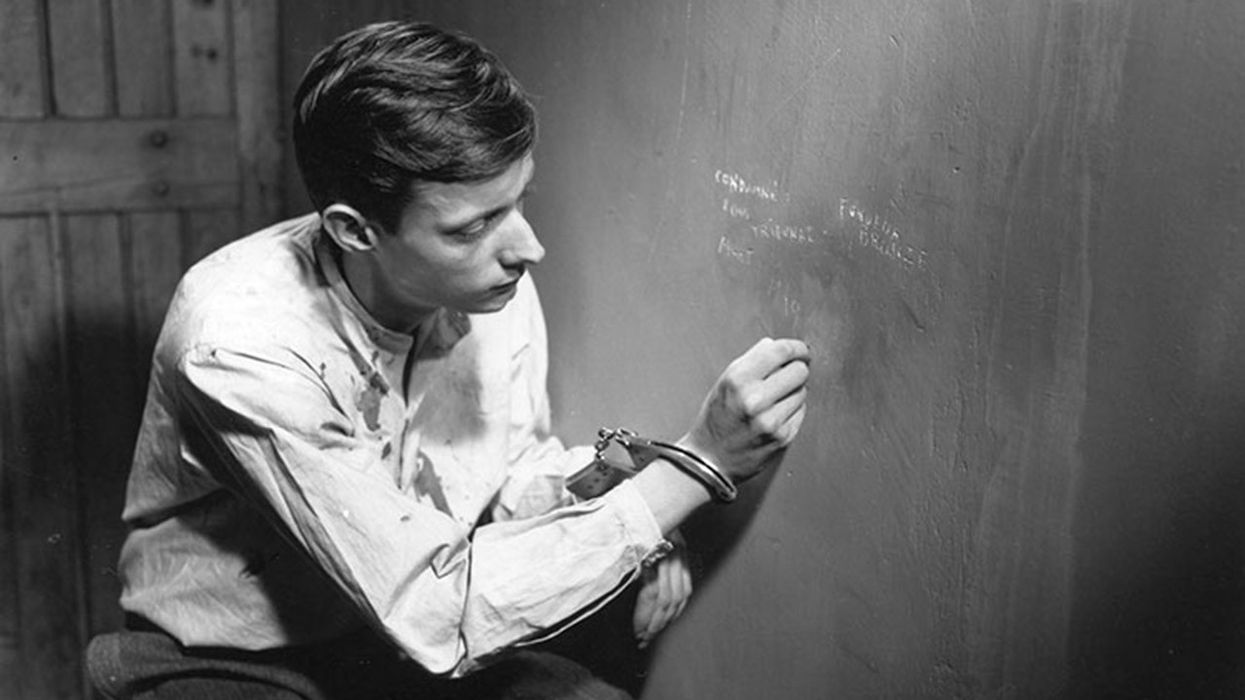What We Can Learn from French Master Robert Bresson's Use of Voiceover
A signature of French filmmaker Robert Bresson's many masterpieces is his use of sound. In A Man Escaped, it's all about the voiceover.

Some filmmakers turn to narration as a last resort storytelling device, or they find a voiceover forced upon them by nervous producers, who are afraid that their plot as it stands will be unclear to audiences. Voiceover as exposition rarely works, though; it frustrates audiences by telling us what we should be shown. In Bresson's A Man Escaped, about a POW's escape from a prison camp in WWII, the voice-over is extensive, but it serves several real functions in the film. This video essay from The Criterion Collection delves more deeply:
Though the film is narrated by the escaped man, Fontaine, the essay notes that we never find out whether the voice-over is internal or external, or even when it is occurring. So what function does it serve? In Susan Sontag's essay on the films of Bresson, she posits that in Bresson's films we find: "...a deliberate flouting of one of the traditional modes of narrative: suspense." Furthermore, "In the one film where suspense should play a large role, [A Man Escaped] the title deliberately-even awkwardly, gives the outcome away." This is also illustrated in the film's trailer, where voice-over (of a third, neutral omniscient voice, predominates):
Also, as the video essay notes, while the voice-over helps us to orient ourselves, or find out how Fontaine had felt at a certain period in time, there are also moments when the voiceover openly contradicts what happens on screen. Sontag speculates that by making "the action so ostensibly real," the eventual perception is, "that it is suspicious."
"If a sound is the obligatory complement of an image, give preponderance either to the sound or to the image."
The best answers my be found by turning to the source. In Bresson's own "Notes on Sound", excerpted below the clip, we find aphoristic statements on the use of sound in film, and these precepts are ably illustrated by this clip of the first scene in the film.
Bresson on Sound
- When a sound can replace an image, cut the image or neutralize it. The ear goes more toward the within, the eye toward the outer.
- A sound must never come to the help of a image, nor an image to help the of sound.
- If a sound is the obligatory complement of an image, give preponderance either to the sound or to the image. If equal, they damage or kill each other, as we say of colors.
- What is for the eye must not duplicate what is for the ear.
- The eye solicited alone makes the ear impatient, the ear solicited alone ,makes the eye impatient. Use these impatiences. Power of the cinematographer who appeals to the senses in governable way. Against the tactics of speed, of noise, set tactics of slowness, of silence.
Bresson was unique among filmmakers. In Sontag's words, his work always tended towards an aesthetic wherein "art is the discovery of what is necessary." A Man Escaped is an object lesson in the necessary, from the images to the voice-over, and all filmmakers would do themselves a service to study his cinema of grace and carefully chosen sound or silence.
`
Source: Spiritual Style in the Films of Robert Bresson By Susan Sontag














